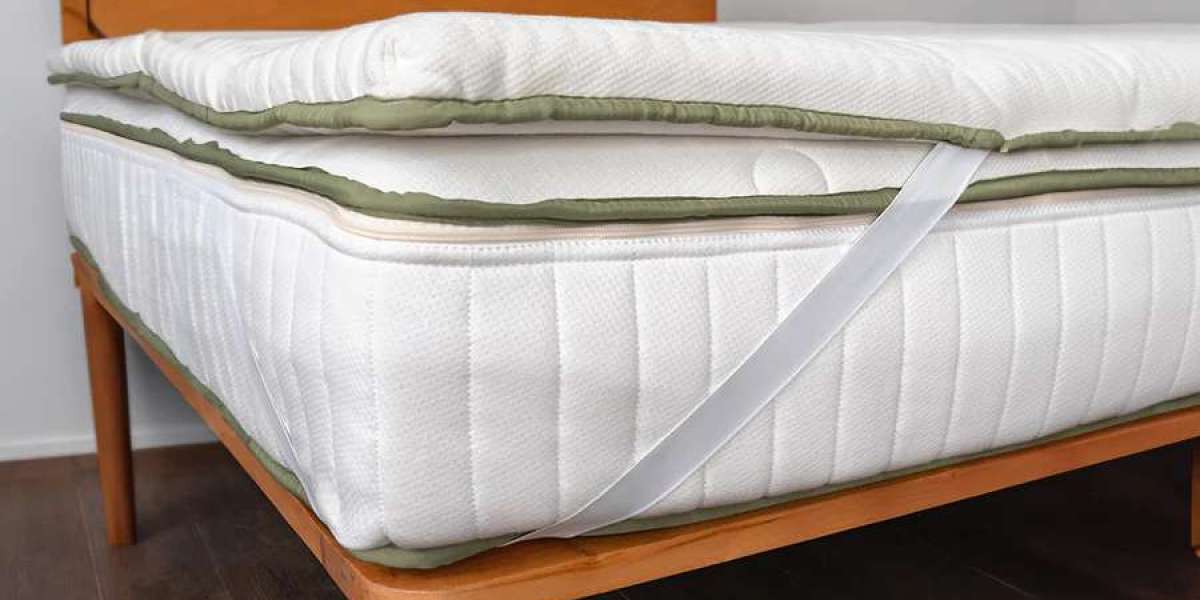A memory foam mattress is a type of mattress made from viscoelastic foam; a material originally developed by NASA in the 1960s to improve the safety of aircraft cushions. Memory foam is known for its ability to conform to the shape of the body in response to heat and pressure, providing personalised support and comfort.
The best organic latex mattress is a type of mattress made primarily from latex, a material derived from the sap of rubber trees (natural latex) or synthesised from chemicals (synthetic latex). Latex mattresses are known for their durability, resilience, and support, offering a unique feel compared to other types of mattresses like memory foam or innerspring.
Latex toppers and mattresses offer a balance of comfort and support, with a firmer, more buoyant feel than memory foam. They are well-suited for a wide range of sleepers, including those who prefer a more supportive mattress with some bounce. Their durability, natural materials, and temperature regulation make them a popular choice for eco-conscious consumers and those seeking a long-lasting mattress.
Key Differences
1. Support and Feel:
Memory Foam: Moulds to the body, offering a “hugging” sensation.
Latex: The best latex mattress is more responsive and bouncier, with a firmer feel.
2. Temperature Regulation:
Memory Foam: Tends to retain heat, which might cause discomfort for hot sleepers.
Latex: More breathable, promoting better airflow and cooler sleep.
3. Durability:
Memory Foam: May develop body impressions over time, leading to a shorter lifespan.
Latex: Generally, more durable, especially natural latex, and less prone to sagging.
4. Eco-Friendliness:
Memory Foam: Often made with synthetic materials and chemicals, though some models are more environmentally friendly.
Latex: Natural latex is a more sustainable and biodegradable option.
5. Motion Isolation:
Memory Foam: Excellent at isolating motion, ideal for couples.
Latex: Good but not as effective as memory foam in this aspect.
Choosing between the two depends on your personal preferences for comfort, support, temperature regulation, and environmental concerns.
How to choose the right mattress for yourself
Choosing the right mattress is essential for a good night’s sleep and overall well-being. The right mattress should provide the right balance of comfort, support, and durability based on your personal preferences, body type, and sleeping habits. Here is a guide to help you select the best mattress for yourself:
1. Determine Your Preferred Sleeping Position
● Side Sleepers: Often require a softer mattress that can cushion the shoulders and hips, which are the main pressure points in this position. Memory foam or latex with a softer feel can be ideal.
● Back Sleepers: Need a medium-firm mattress that supports the natural curve of the spine. Hybrid mattresses or firmer memory foam options are usually suitable.
● Stomach Sleepers: Require a firmer mattress to prevent the torso from sinking in too much, which can cause back pain. Innerspring or firm latex mattresses might work best.
● Combination Sleepers: If you switch positions during the night, consider a mattress with medium firmness that offers a balance of comfort and support for various sleeping positions.
2. Consider Your Body Type and Weight
● Lighter Individuals (<150 lbs): Tend to prefer softer mattresses, as they can experience adequate pressure relief without sinking too deeply.
● Average Weight (150-230 lbs): Medium to medium-firm mattresses usually offer a good balance of comfort and support.
● Heavier Individuals (>230 lbs): Often need a firmer mattress to provide proper support and prevent excessive sinking. Hybrid or firmer latex mattresses are often recommended.
3. Understand Mattress Types
● Memory Foam: Offers excellent contouring and pressure relief. Ideal for those who want a mattress that moulds to their body shape. Good motion isolation but may retain heat.
● Latex: Provides a responsive, bouncy feel with good support and temperature regulation. It is durable and often made from natural materials.
● Innerspring: Features coils for support, offering a firmer feel with good bounce. Better for those who prefer a traditional mattress feel and require more edge support.
● Hybrid: Combines coils with layers of foam or latex, offering the benefits of both support and comfort. Suitable for a wide range of sleepers.
● Airbeds: Allow you to adjust firmness levels by inflating or deflating air chambers. Good for couples with different firmness preferences.
4. Consider Any Health Concerns
● Back Pain: Look for a medium-firm mattress that supports spinal alignment. Memory foam or latex can offer good support and pressure relief.
● Joint Pain: Softer mattresses with good pressure relief, such as memory foam or plush latex, can help alleviate joint discomfort.
● Allergies: Natural latex is hypoallergenic, and mattresses with antimicrobial properties or washable covers can reduce allergens.
5. Evaluate Mattress Firmness
● Soft: Suitable for side sleepers and lighter individuals who need more cushioning.
● Medium: Ideal for back sleepers, combination sleepers, and those with average weight.
● Firm: Best for stomach sleepers, heavier individuals, and those who need more support.
6. Check for Temperature Regulation
● Hot Sleepers: Consider mattresses with cooling technologies, such as gel-infused memory foam, breathable latex, or innerspring mattresses with good airflow.
● Cold Sleepers: Memory foam retains heat, which might be more comfortable in colder climates.
7. Consider Motion Isolation and Edge Support
● Couples: If you share a bed, look for a mattress with good motion isolation to reduce disturbances from movement. Memory foam is excellent for this, while hybrid and innerspring mattresses with reinforced edges offer better edge support.
8. Budget Considerations
● Set a budget that allows for quality, but within your means. While you can find good options of an affordable latex mattress at various price points, investing in a high-quality mattress can be beneficial in the long run.
9. Test the Mattress
● If possible, visit a store to try out different mattresses. Lie down in your usual sleeping position to see how it feels. Many online retailers offer sleep trials, so you can test the mattress at home and return it if it does not suit your needs.
10. Check Warranties and Return Policies
● A good warranty and a generous return policy can provide peace of mind, ensuring that your investment is protected if the mattress does not meet your expectations.
These factors can help you make an informed decision and choose a mattress that provides the comfort, support, and durability you need for a restful night’s sleep.








